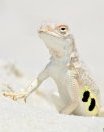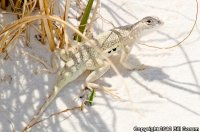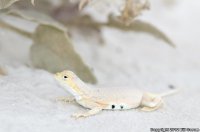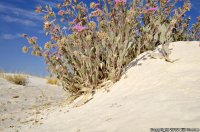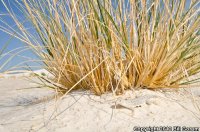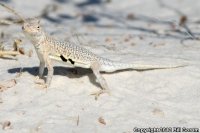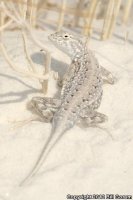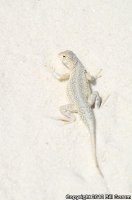| Range: |
 Only found in the White Sands area of Otero County. Only found in the White Sands area of Otero County. |
| Other Names: |
|
| Description: |
A small (up to 70 mm or 2.75" from snout to vent), white lizard with variable markings. Looks very similar to the Speckled Earless Lizard, but much lighter, almost entirely white. The scales are small and granular. |
| Venom: |
None |
| Habitat: |
Sandy soil including sand dunes |
| Behavior: |
This diurnal lizard is most active mid morning and late afternoon during the hottest months of summer. It can be active throughout the daylight hours in spring and early fall. |
| Hibernation: |
It hibernates during the cold months of winter and late fall. |
| Reproduction: |
Mating takes place in spring and one or two clutches of eggs are laid in spring and summer. Clutch size ranges from 1 to 10 eggs. |
| Diet: |
The Common Lesser Earless Lizard feeds on a variety of insects including grasshoppers, beetles, bees, wasps, ants, true bugs, butterflies, and moths. It also eats a variety of spiders and small lizards. |
